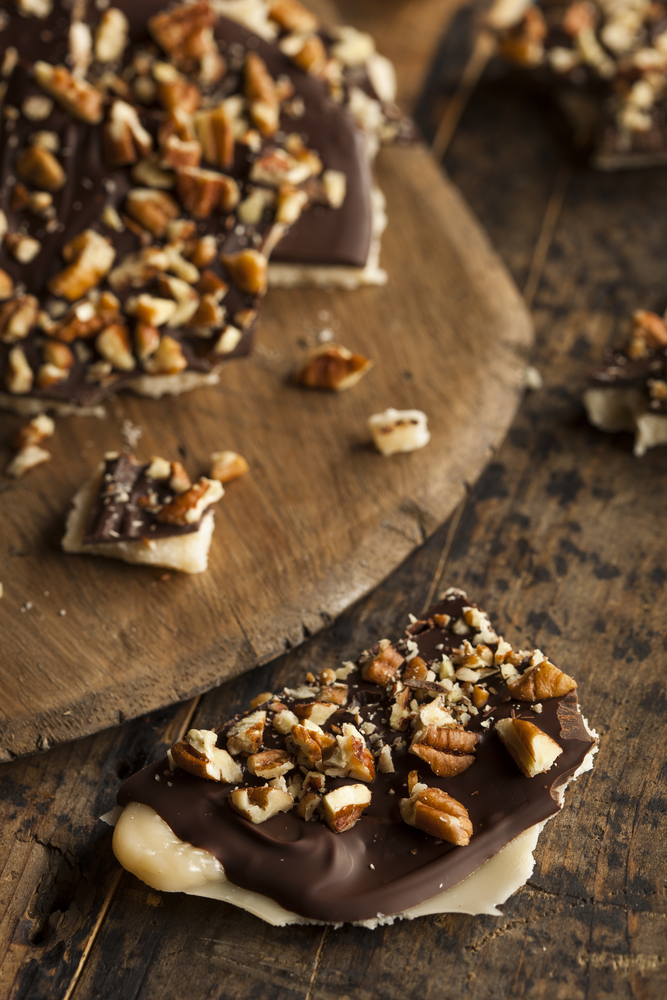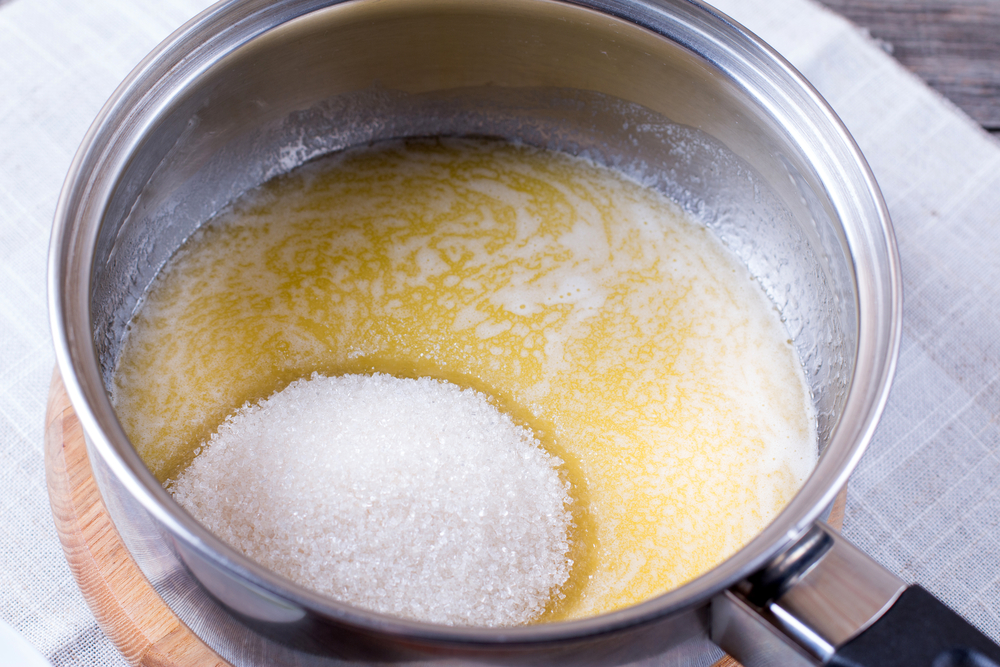Toffee became known in the early 1800s and was first included in The Oxford English Dictionary in 1825 where it was identified as a type of taffy. The toffee enjoyed by Americans today is not exactly the same as the original English toffee. For example, traditionally the recipe did not include nuts, and it called for brown sugar. Most modern recipes use white granulated sugar. English toffee is hard and crunchy, while the toffee enjoyed in the United States often has a soft and chewy texture. Modern toffee recipes allow for a great deal of variety. Some toffees are thin, while others are thick. Some recipes use milk chocolate while others call for dark chocolate. Like many dessert recipes, cooks alter and adapt the recipe to their tastes.
Recipe Servings: 2
Ingredients
Directions
- 1. Line a 9 x 9-inch baking dish with a piece of parchment large enough to hang over the sides.
- 2. Spread the nuts evenly in a single layer on top of the parchment.
- 3. Combine the butter, sugar, and salt in a medium saucepan and bring to a boil over medium-low heat, stirring frequently to dissolve the sugar. Once boiling, stir occasionally until it reaches 290–300°F on a candy thermometer.
- 4. Remove the mixture from the heat and stir in the vanilla.
- 5. Pour the mixture over the pecans.
- 6. Let the mixture rest undisturbed for a few minutes before sprinkling the chocolate chips over it (or laying chocolate bars over it).
- 7. Cover the baking dish with foil and let it rest for 5 minutes or until the chocolate softens.
- 8. Remove the foil and gently spread the chocolate into an even layer.
- 9. Chill the candy in the refrigerator for at least 2 hours or until completely cooled.
Recipe introduction and directions © Copyright 2016-2025 World Trade Press. All rights reserved.


